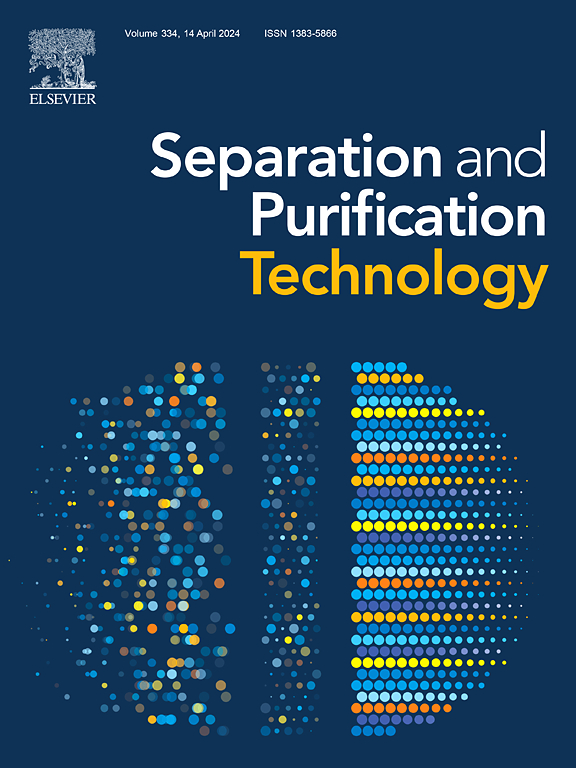Dual-active-site engineering of urea-based ionic polymer towards enhanced synergistic catalytic performance of carbon dioxide fixation
IF 8.1
1区 工程技术
Q1 ENGINEERING, CHEMICAL
引用次数: 0
Abstract
Bifunctional catalysts featuring synergistic hydrogen-bond donor (HBD) and halogen anion nucleophile functionalities hold substantial promise for the catalytic conversion of carbon dioxide (CO2). However, the rational design of such solid catalysts at the molecular level is yet to be comprehensively elucidated. In this proof-of-concept study, we synthesized a series of porous ionic polymers (PIPs). These PIPs integrate urea groups and pyridinium bromide as cooperative moieties to promote the conversion of CO2 with epoxides. Through meticulous adjustment of the chemical structure of urea-based monomers, we were able to regulate the relative spatial positioning between neighboring urea and pyridinium salt units within the PIPs. Experimental results revealed that the spatial arrangement of these partners within PIPs not only influences the spatial distance between dual-active sites, but also affects the HBD ability of the urea groups, which subsequently impacts catalytic performance. The optimal catalyst, UPIP-1, distinguished by the placement of the urea group in the ortho-position of the pyridinium salts, showcased the highest HBD ability and the closest dual-active-site distance, resulting in the highest catalytic activity. Specifically, the activity of UPIP-1 was 2.1-fold higher than that of PIPs with the longest dual-site distance and 2.4-fold higher than that of PIPs lacking HBD functionalities. Moreover, UPIP-1 displayed exceptional catalytic performance, broad substrate tolerance, high stability, and recyclability under mild conditions. As a highly effective solid catalyst, UPIP-1 also efficiently catalyzed the cycloaddition reaction, achieving a remarkable yield of 94.3 % under simulated flue gas conditions (15 % CO2 and 85 % N2). This study elucidates the molecular-level correlation between spatial arrangement of cooperative sites and catalytic performance in urea-based bifunctional systems, thereby offering a valuable reference for the rational design of high-efficiency bifunctional catalysts for CO2 conversion.


求助全文
约1分钟内获得全文
求助全文
来源期刊

Separation and Purification Technology
工程技术-工程:化工
CiteScore
14.00
自引率
12.80%
发文量
2347
审稿时长
43 days
期刊介绍:
Separation and Purification Technology is a premier journal committed to sharing innovative methods for separation and purification in chemical and environmental engineering, encompassing both homogeneous solutions and heterogeneous mixtures. Our scope includes the separation and/or purification of liquids, vapors, and gases, as well as carbon capture and separation techniques. However, it's important to note that methods solely intended for analytical purposes are not within the scope of the journal. Additionally, disciplines such as soil science, polymer science, and metallurgy fall outside the purview of Separation and Purification Technology. Join us in advancing the field of separation and purification methods for sustainable solutions in chemical and environmental engineering.
 求助内容:
求助内容: 应助结果提醒方式:
应助结果提醒方式:


